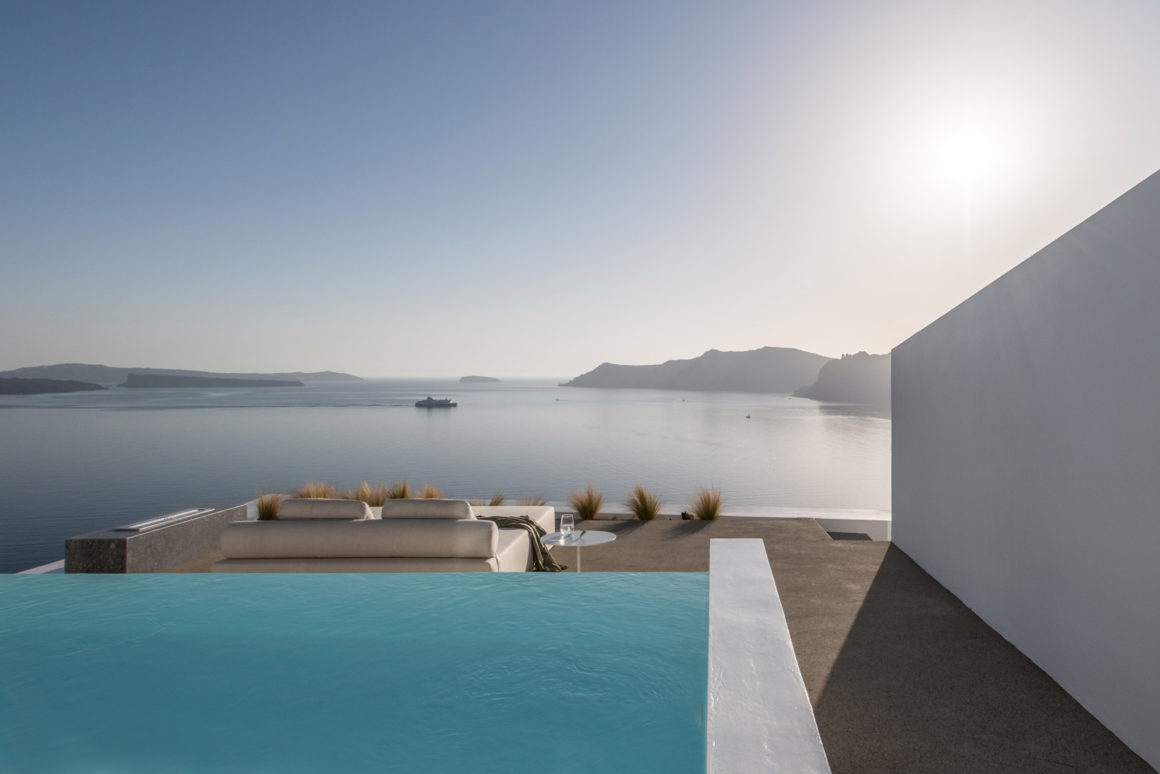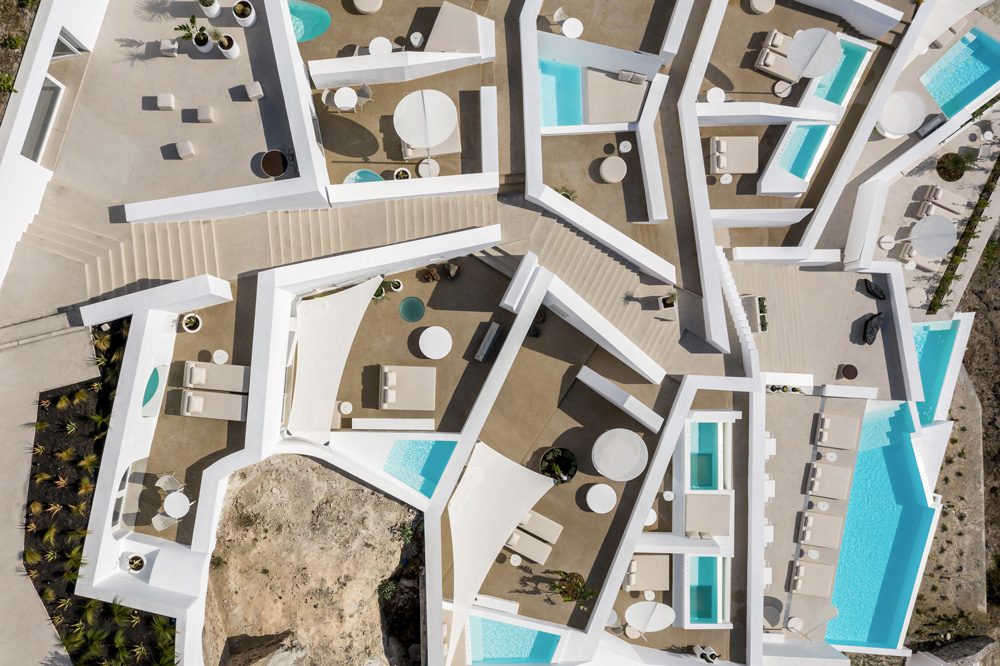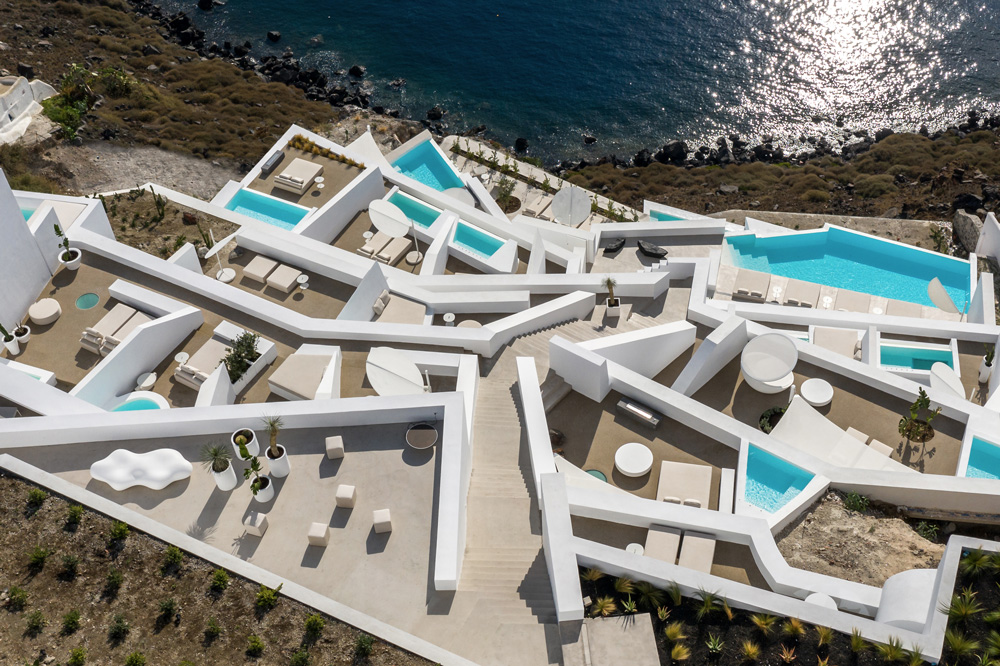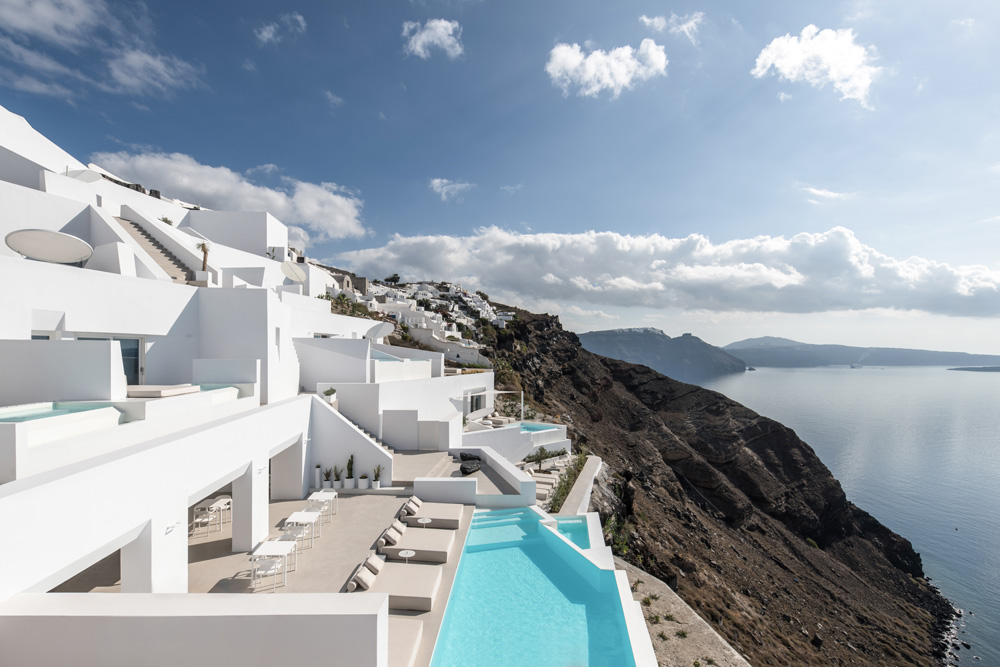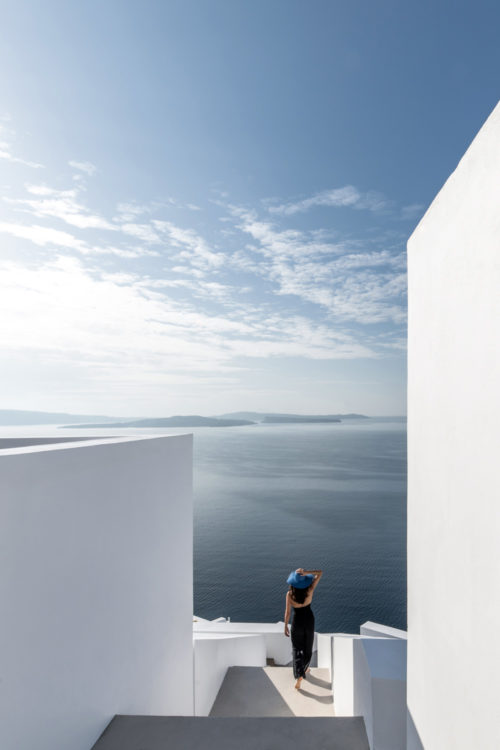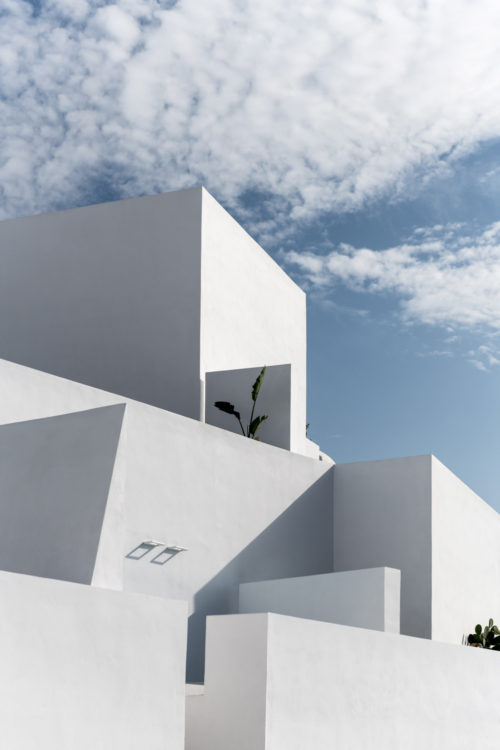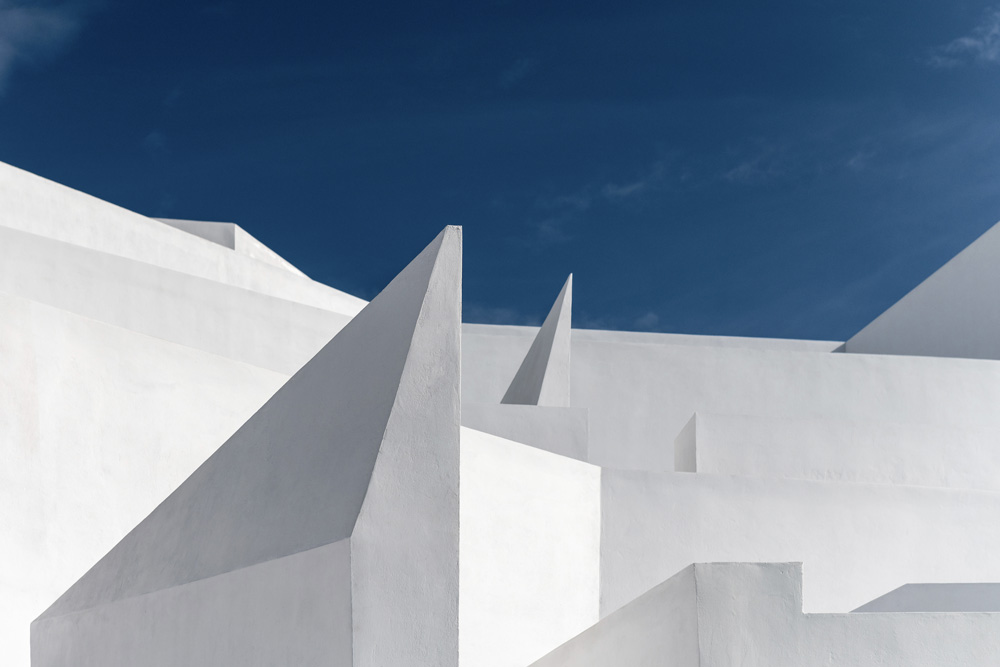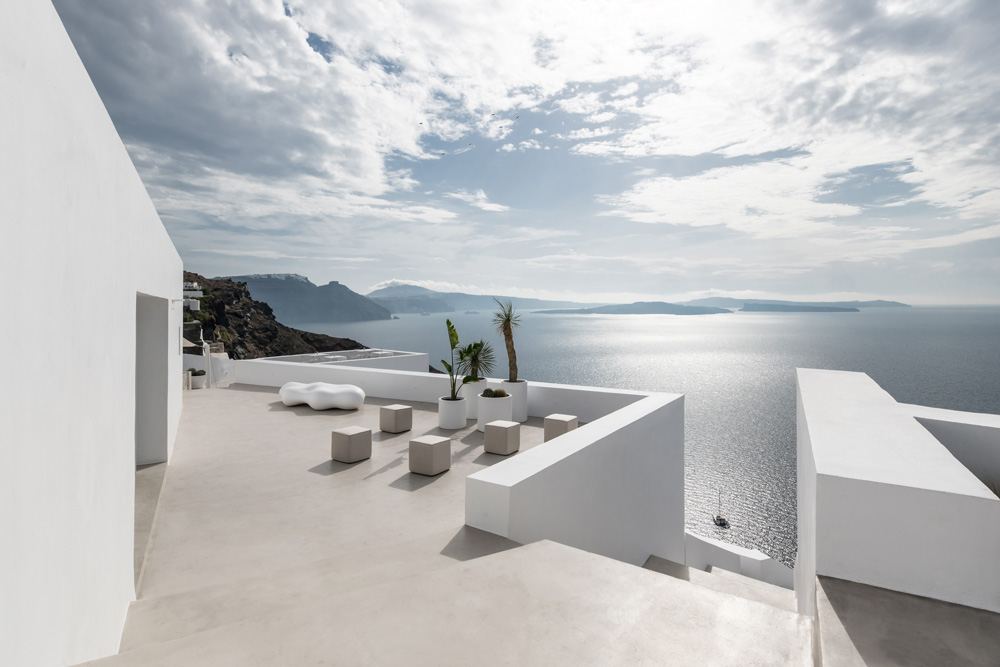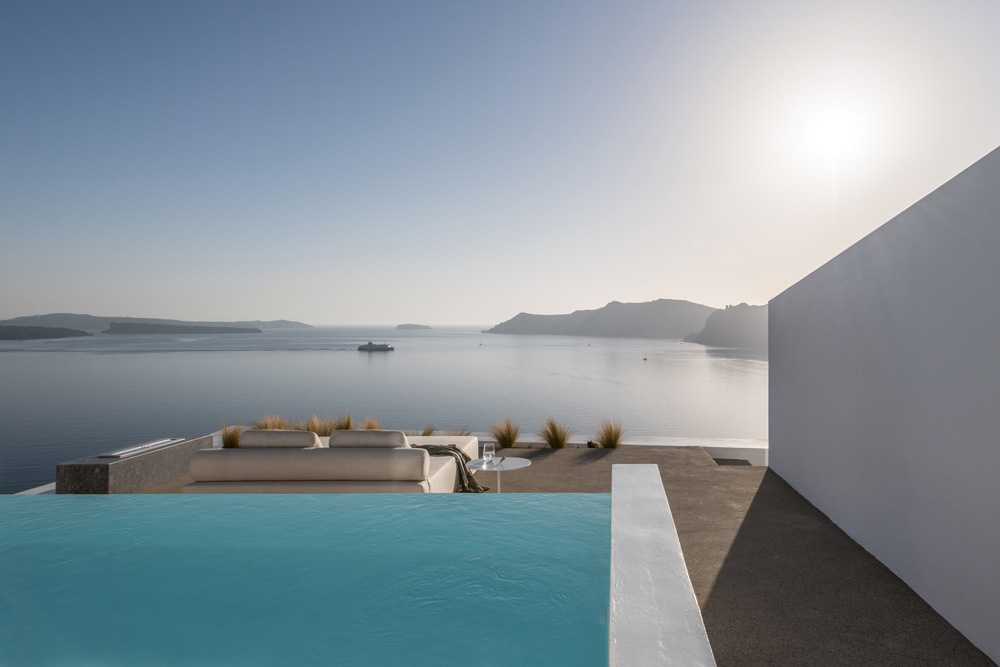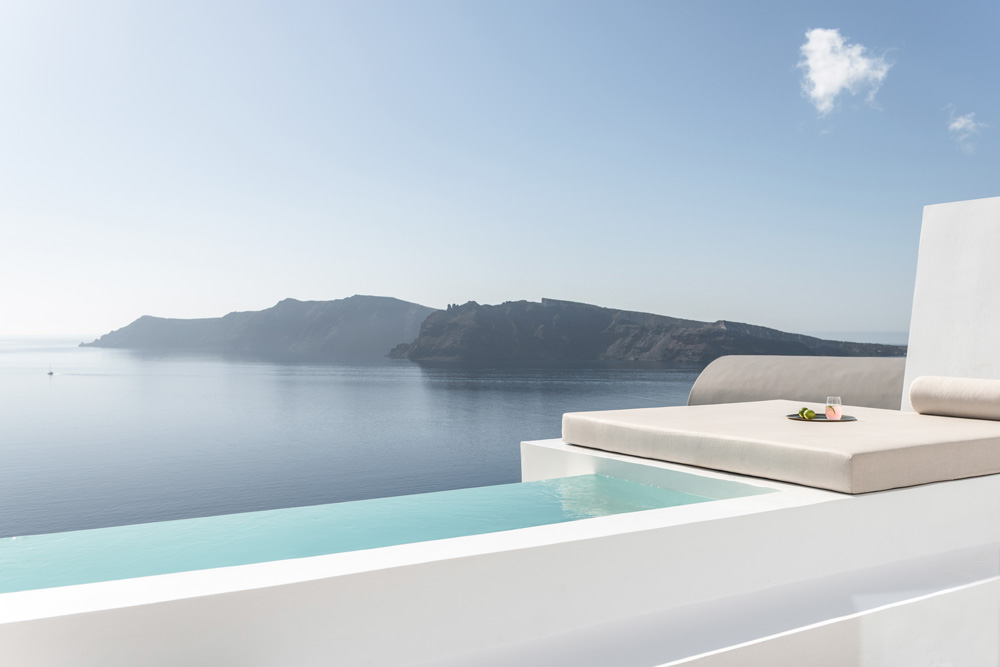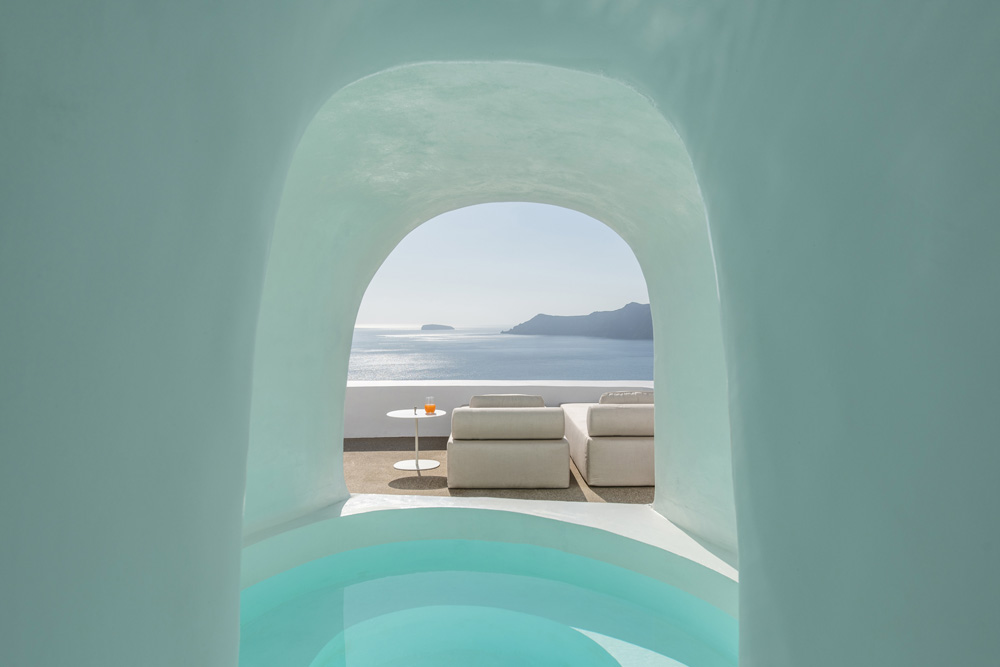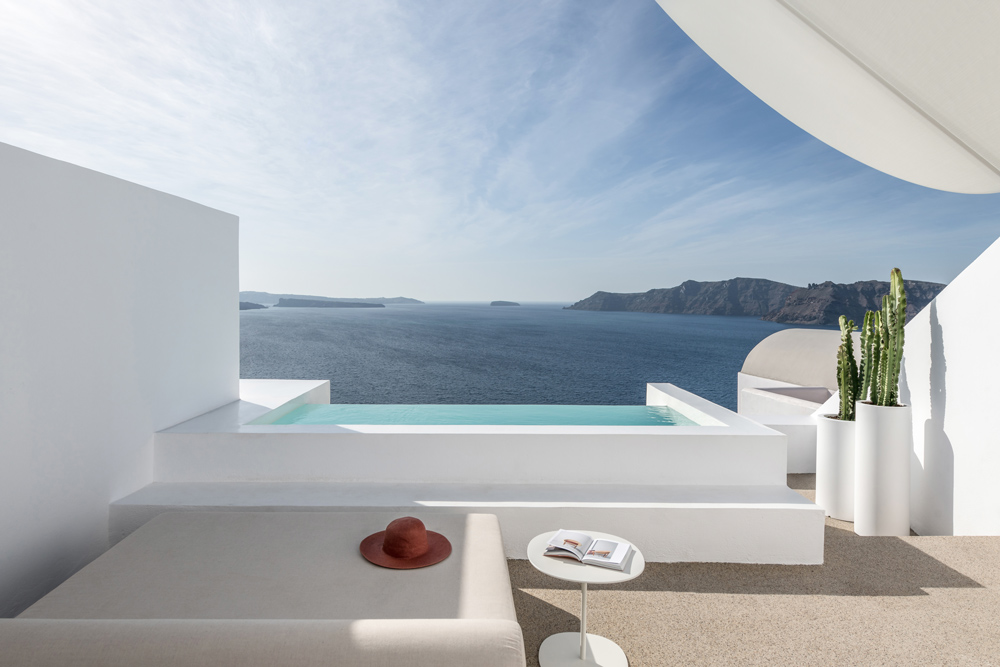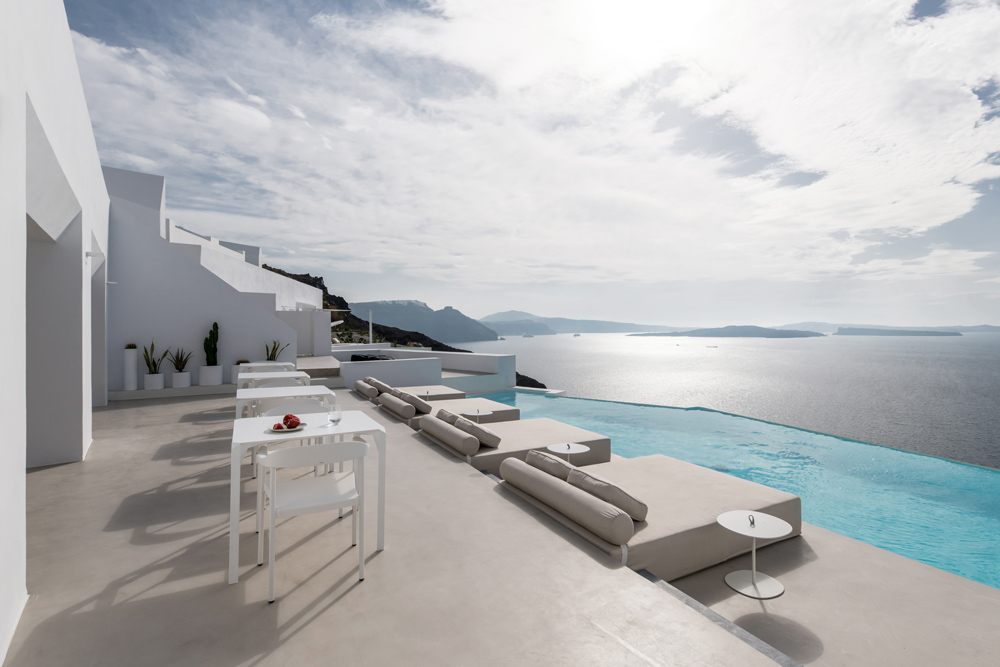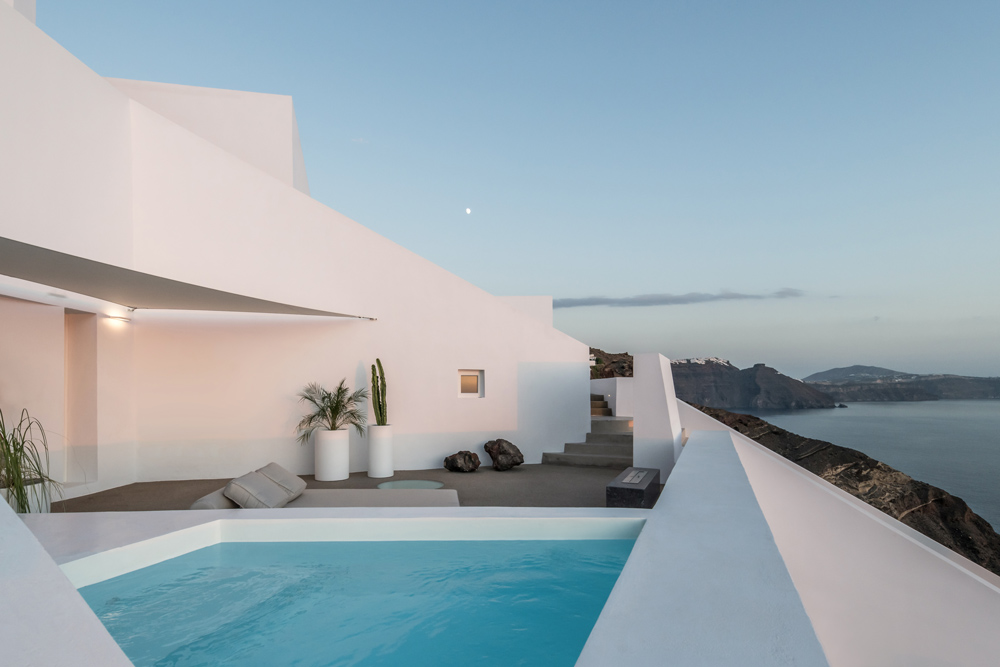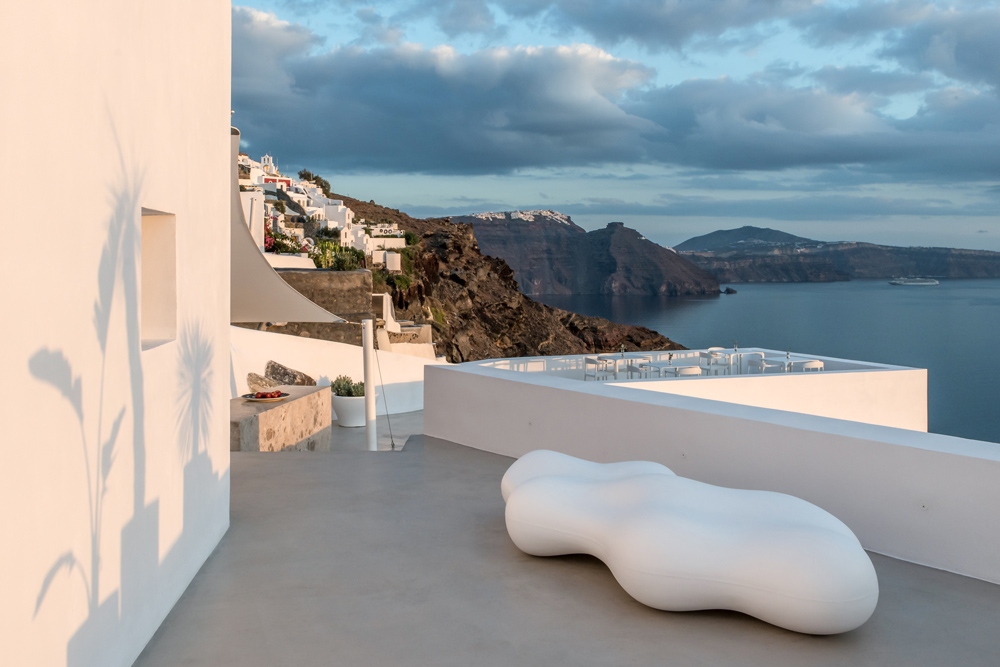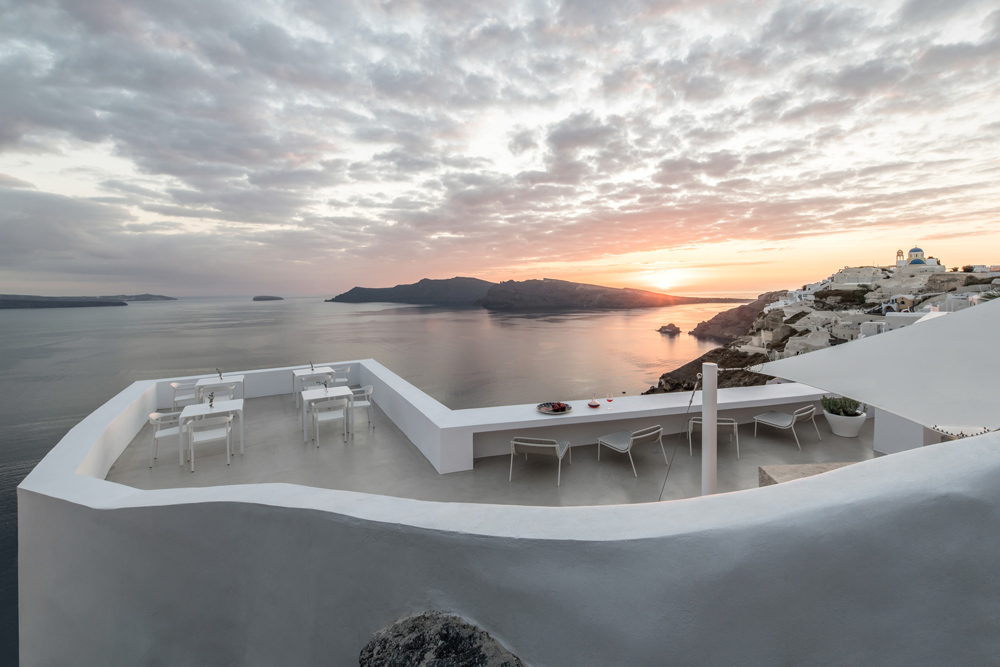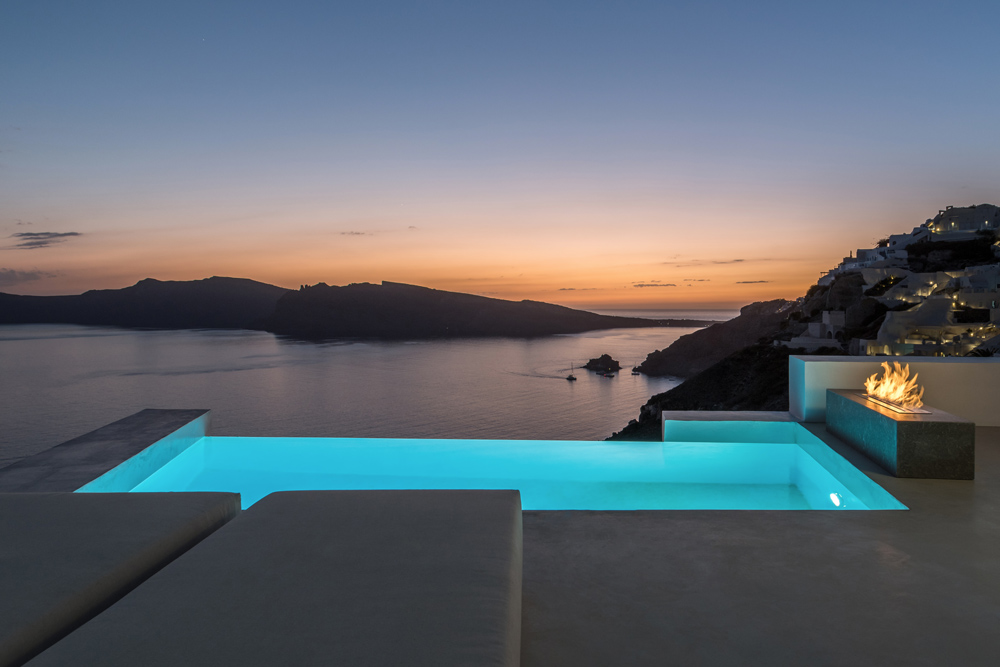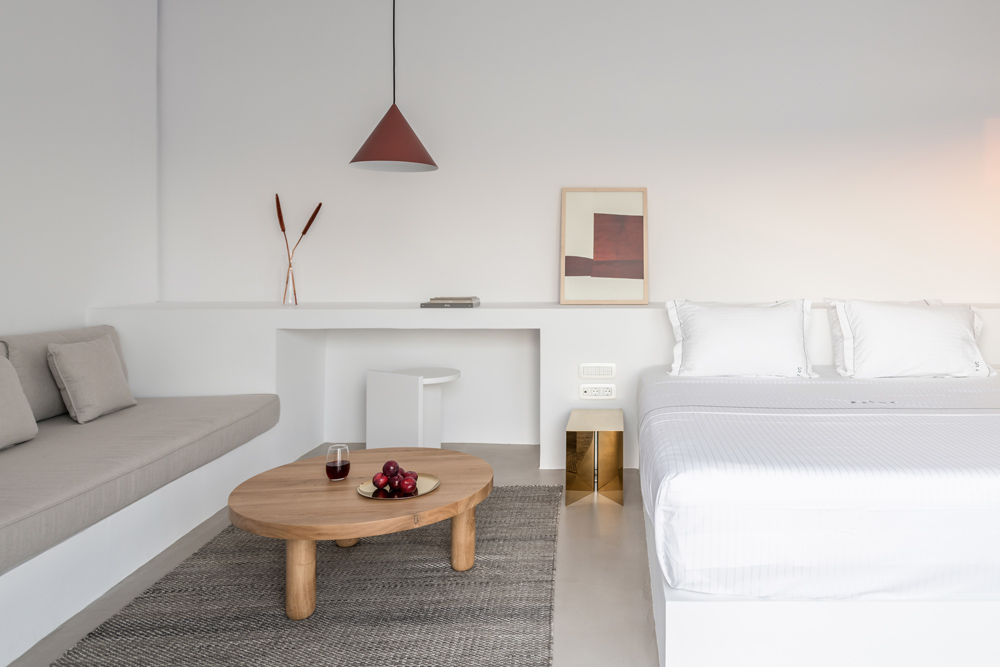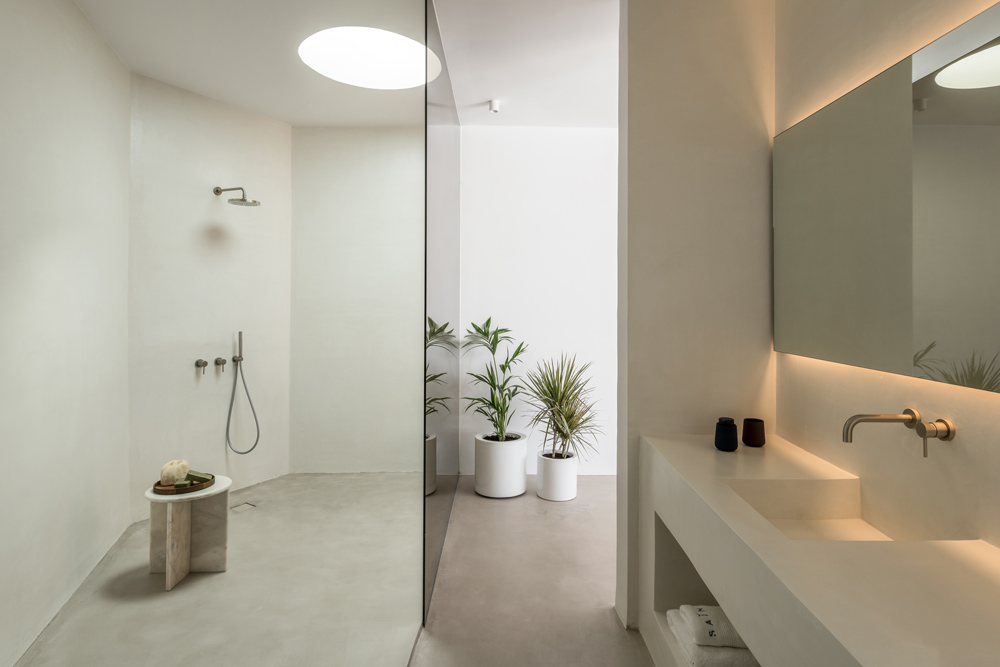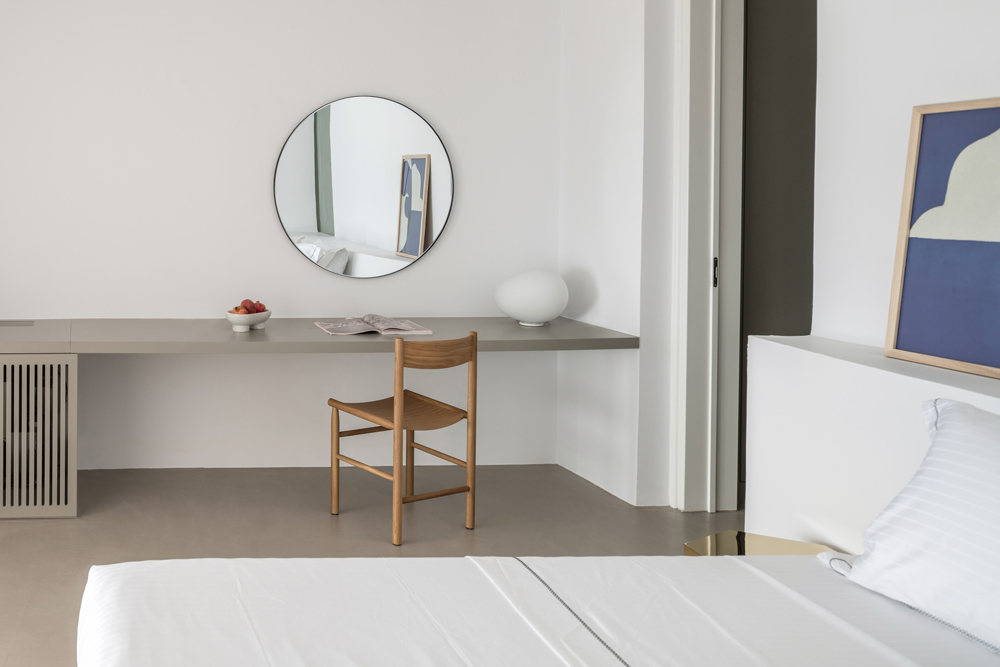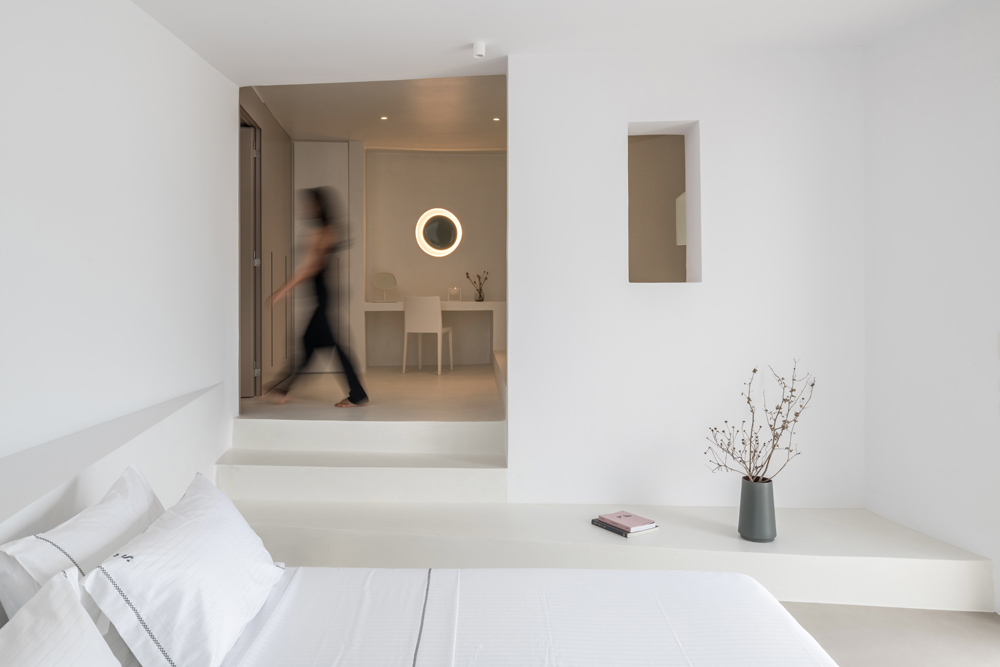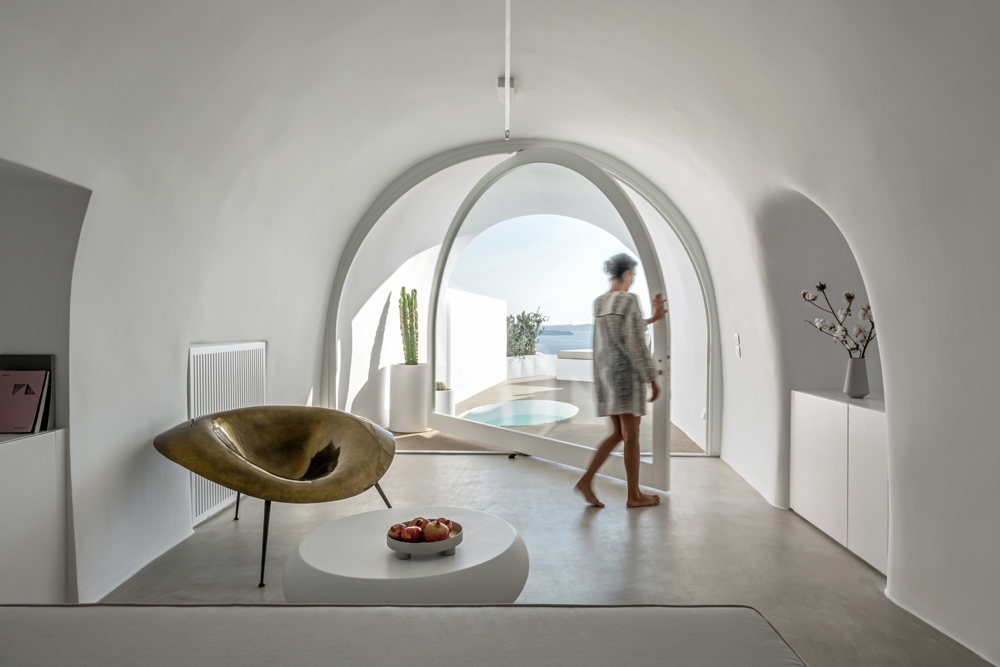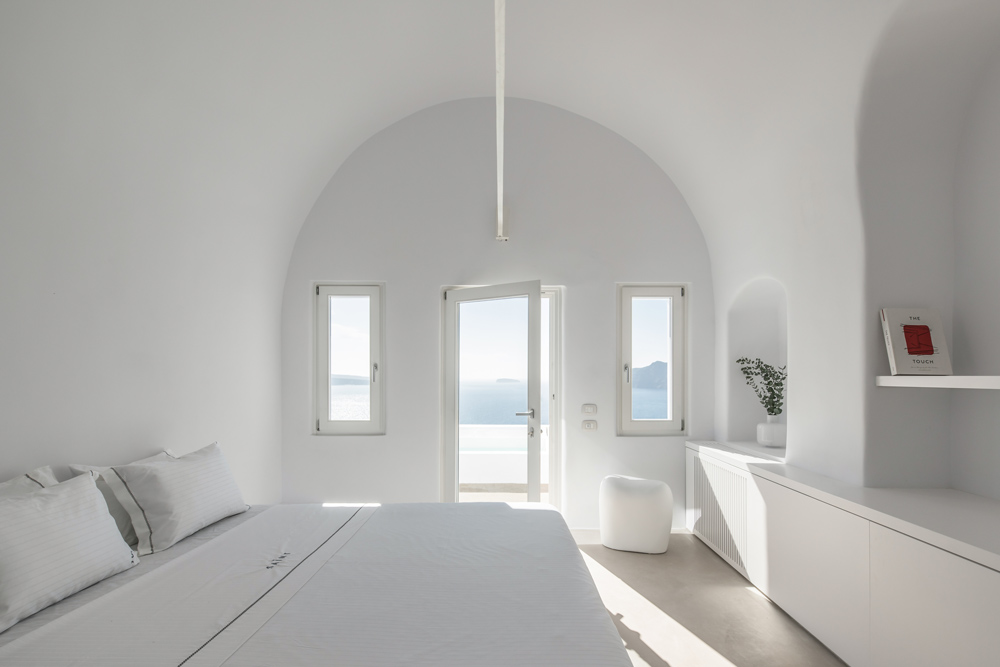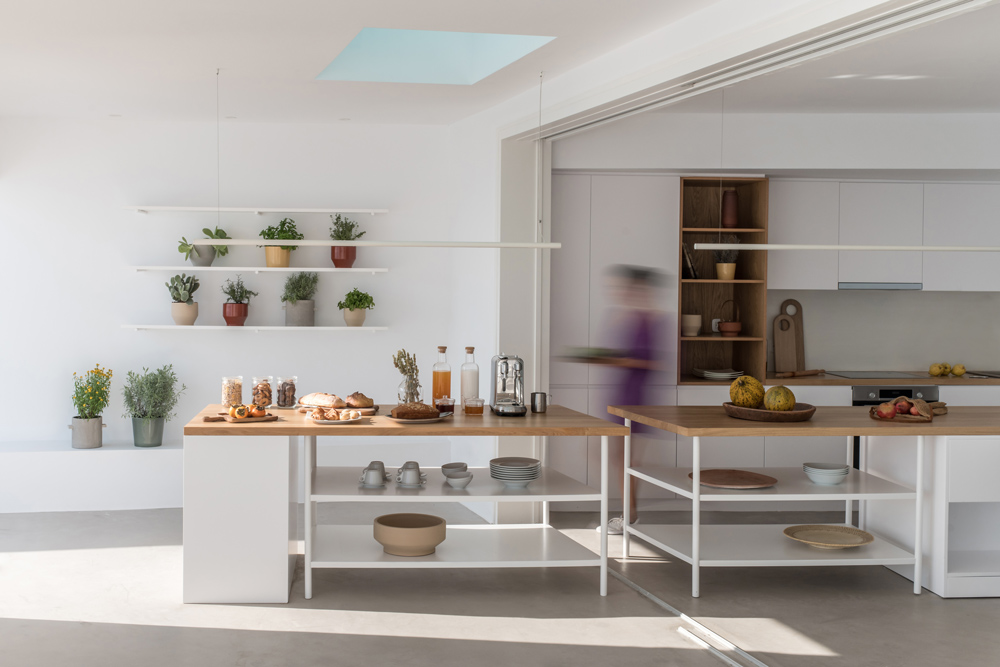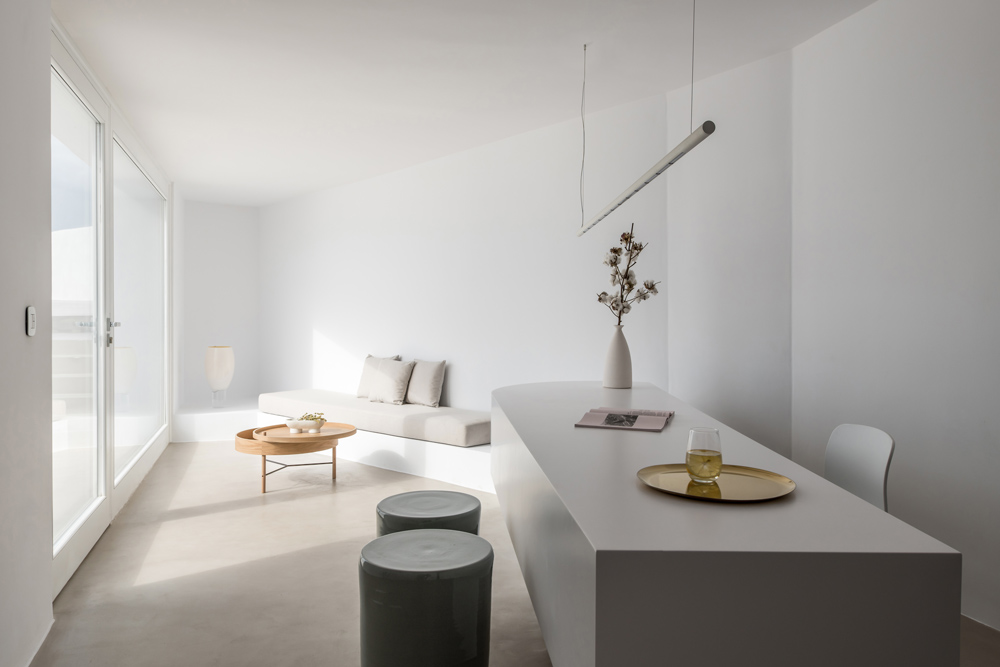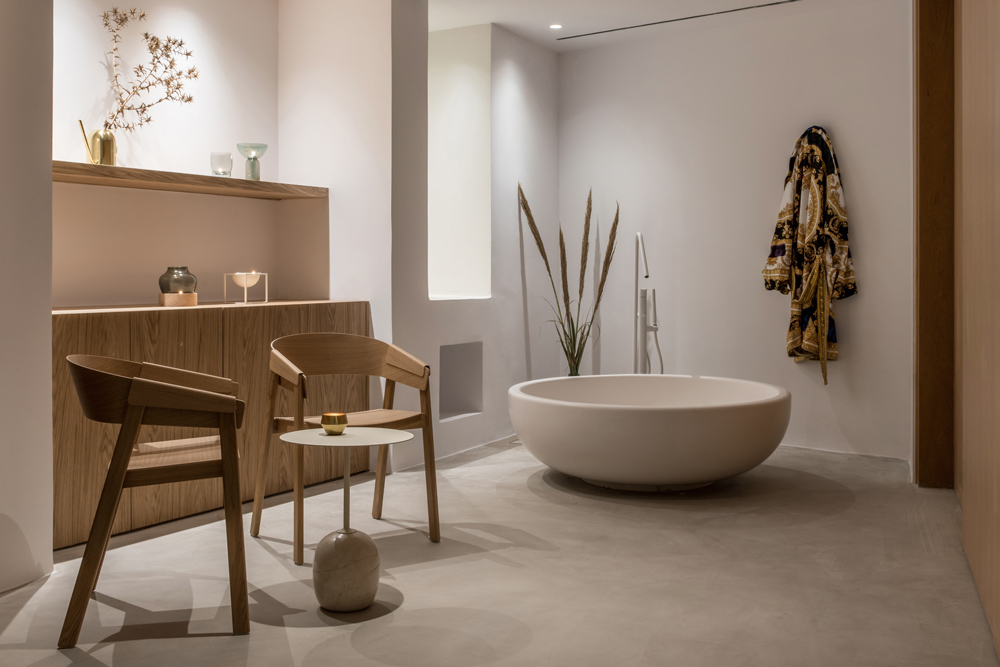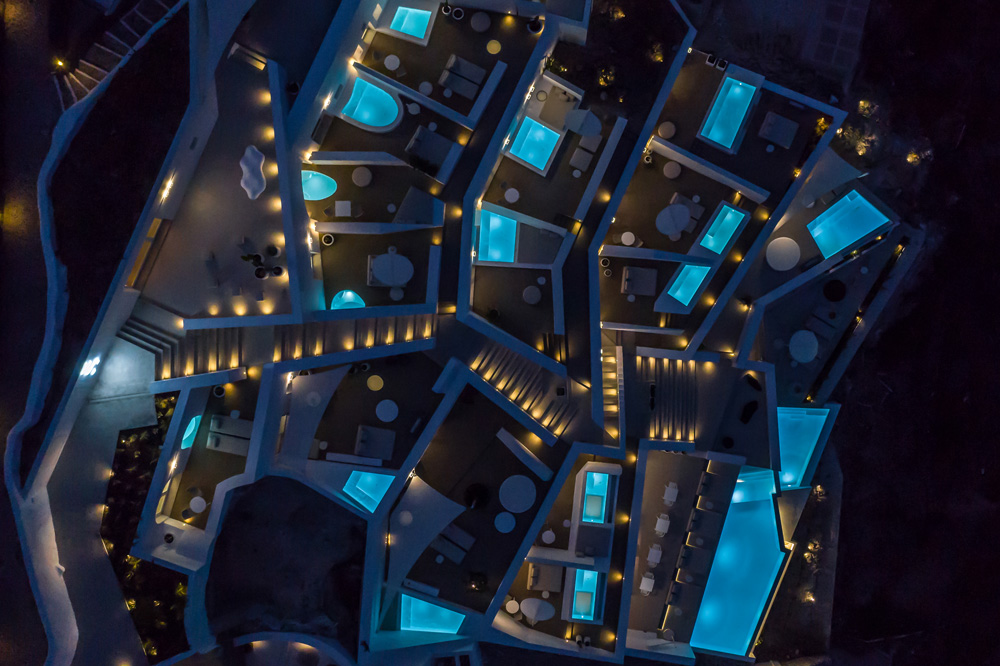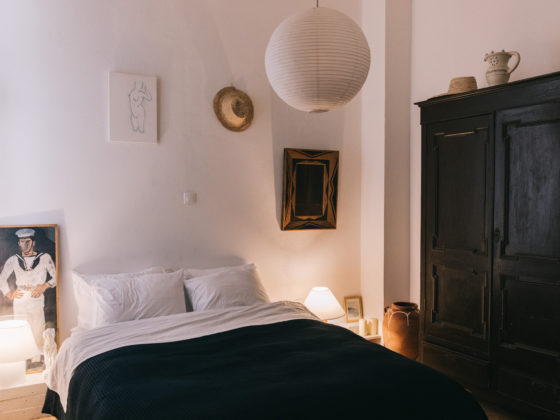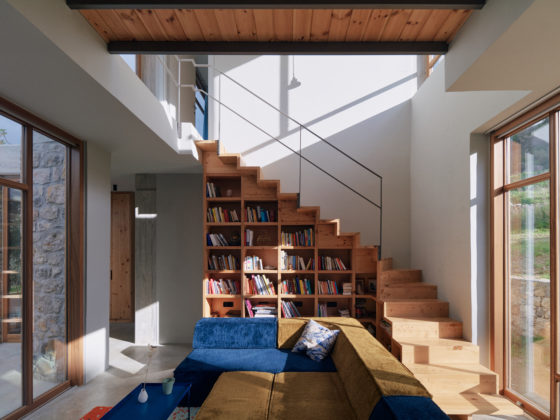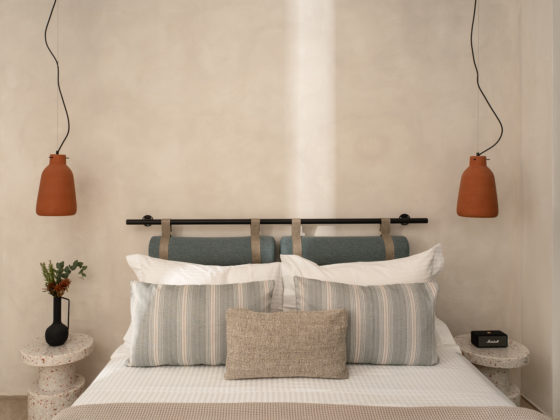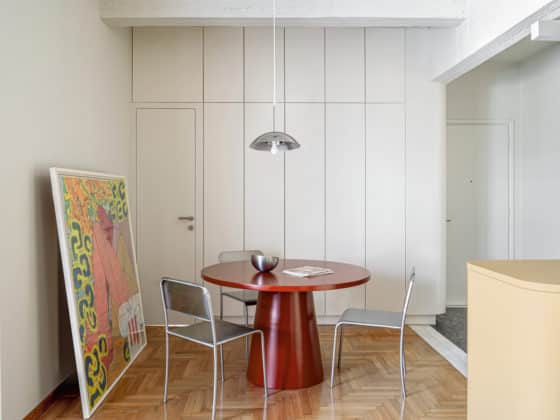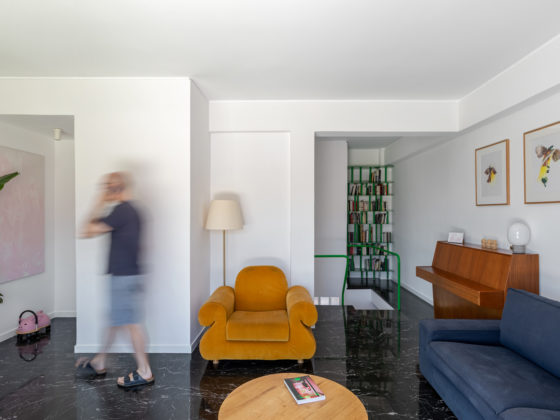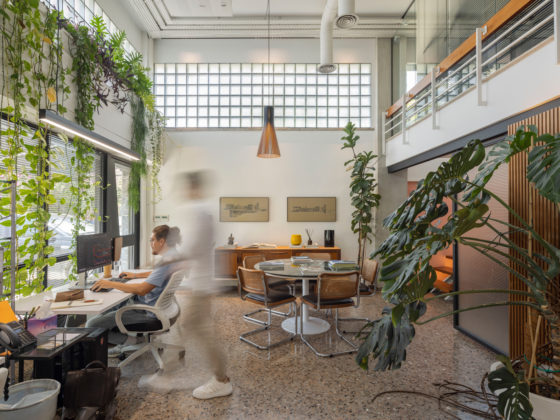The hotel is located on the edge of the traditional village of Oia, at the top of the Caldera volcanic rocks. The plot has a steep ground slope, southwest orientation and unobstructed views to the sea and the volcano. Inside the plot there were ruined caves, used as storage areas, barn and cellars, and an old cubistic residence on its north-east corner.
The purpose of the project was the reconstruction of the existing old buildings and the addition of new cave hotel rooms, for the formation of the hotel complex. As a result, the hotel consists of a small reception, sixteen rooms, a restaurant, a common pool area and a spa-gym. These spaces are articulated gradually on the six levels of the complex. The hotel entrance, which can be reached through the main village pedestrian, is on the upper level where the reception and an outdoor lounge area are located too. Α central exterior staircase leads from the upper level to the level of the restaurant and the infinity pool area, connecting the intermediate three levels which comprise the hotel rooms and their private yards and pools. The lowest level includes a spa reception, a small gym, massage rooms, hammam, sauna booths, w/c, storage areas and a private relaxation yard on the edge of the cliffs.
The main objective of the proposal is a) the unalloyed restoration of the old existing buildings and b) the construction of the new cave hotel rooms and common spaces as a contemporary and distinct recasting of the cubistic morphology of the old settlement but at the same time as a discrete continuation of the caldera’s landscape terrain.
The form of the new cave hotel spaces retains the cave-house structure, the geometric shapes, the human scale, the materiality and the white color of the traditional motif. However, their floor plan typology and openings rotate, framing the sea view. Respectively, their facades follow the crooked lines of the existing natural elevation curves, like folding retaining walls that gently fit into the surrounding environment. The overlap of the above synthetic layers shapes the building’s final form and its intense dynamics. The downward movement of the central exterior staircase from the hotel entrance to the lowest part of the plot simulates a ‘’crack’’ in the buildings’ ‘body’, which directs movements and guests to the individual private and common hotel areas.
The interior design of the hotel, follows an austere and minimal approach based on the Cycladic architecture norms. The existing caves’ interior space meets a ‘total white’ mood, with mimimum touches of iridescent gold and green colors, while free built curves and free standing amorphous furniture bring out and enhance its sculptural plasticity. The new cave hotel spaces are characterised by a ” la vie en bleu ”, mediteranee, vivid-color aesthetic, with abstract references to the cosmopolitan resorts of the Mediterranean South, more geometrical though, correlating the shapes and volumes of the interior with the forms of the exterior synthesis.
